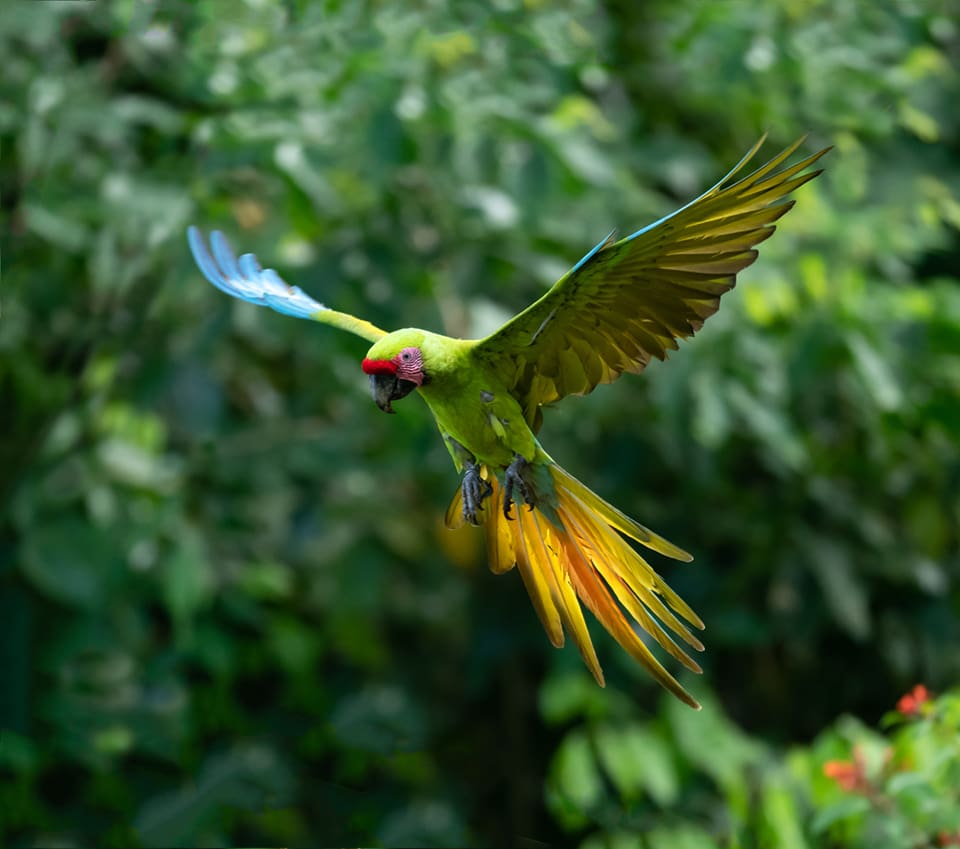ADOPTA Bosque (Adopt a Panama Rainforest Association) conserves Panama’s unique ecosystems and educates the public about the importance of the neotropics. Their work includes protecting critically endangered Great Green Macaws.
In Panama, the threat situation for Great Green Macaws (Ara ambiguus) is similar to other countries where the species is found; there are, however, fewer data on their distribution and how the wild birds are coping. This increases the urgency of meeting the challenges facing these macaws. One issue that is known: the trees they choose for nesting tend to be large and old and as a result, frequently fall due to storms or are cut by people. This is a significant obstacle to their breeding success and recovery.
ADOPTA Bosque works in two indigenous territories (La Marea and Bajo Lepe) in the Darién region, which borders Colombia. These areas may be important as strongholds for Great Green Macaws. To help the macaws, ADOPTA biologists engage local communities with education and awareness programs to change perceptions of the macaws, encourage ecotourism, cottage industries and other initiatives to help minimise damaging slash-and-burn agriculture practices and poaching activities, involve local people in citizen science work such as nest box construction, installation and monitoring, restore and protect crucial forest, and collaborate in regional conservation efforts with Colombia and Costa Rica.
In research efforts, the team has now located up to five active Great Green Macaw nests. The team is looking to increase nest site availability and protection within the Darién and obtain new data on the birds’ habitat use and movements in the area. Funding from the WPT and the Natural Encounters Conservation Fund has helped in these efforts.
Status: IUCN Critically Endangered / CITES Appendix I
Population: 500-1000 mature individuals.
Range: A.a. ambiguus: Caribbean lowlands of E Honduras to NW Colombia. A.a. guayaquilensis: W Ecuador, Esmeraldas; smaller numbers in the Cordillera de Chongon-Colonche, Guayas.
Natural history: These macaws are found at altitudes up to 600 m (1968 ft) in Costa Rica and 1000 m (3280 ft) in Panama and are seen in pairs or small groups foraging on seeds, nuts, fruits, flowers, bulbs, roots and bark. Almendro tree seeds are a major part of the species’ diet. Breeding is May-October in Ecuador, dry season (December-April) in Costa Rica. Nest is in a tree hollow.

